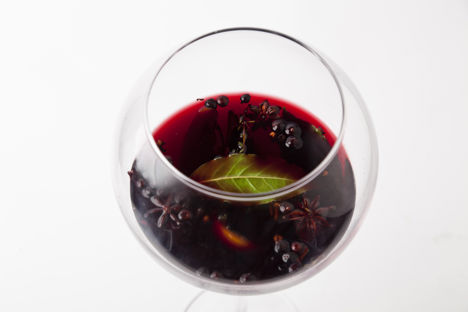As well as enjoying a warming glass at a festive market, why not make your own easy version of mulled wine home. Our guide to the drink, its heritage and ingredients, shows you how.
What is mulled wine?
‘Mulling’ involved warming spices and sugar with wine to flavour it. The drink is thought to have been around since Mediaeval times, with the flavourings probably first added to mask the flavour of poor quality alcohol. The Nordic glögg and German Glühwein date back as far as the 15th century, but in the UK it was the famous Mrs Beeton who first recorded her recipe for mulled wine in 1869.
What are the key ingredients in mulled wine?
Traditionally mulled wine is made with whole spices such as cinnamon, star anise and cloves, with the zested peel of an orange or lemon and a little caster sugar. The best wines to use for mulling are medium-bodied, fruity red wines that are unoaked. Go for varieties such as Montepulciano, syrah, merlot and cabernet sauvignon. Follow our recipe for a classic version:
Metric
Imperial
- 75g of caster sugar
- 1 cinnamon stick
- 1 star anise
- 3 cloves
- 1 orange, zested
- 750ml of red wine
Put the sugar, spices and citrus into a pan with enough wine to cover the base of the pan
- 75g of caster sugar
- 1 cinnamon stick
- 1 star anise
- 3 cloves
- 1 orange, zested
Simmer for 5-10 minutes until the sugar has dissolved and you have a syrup
Pour in the rest of the bottle of wine and heat through on a low heat until warmed through (making sure not to boil). Serve your mulled wine in heatproof glasses or mugs
- 750ml of red wine
If you are looking to put a spin on the classic recipe you can include other aromatics and spices, such as cardamom, ginger, vanilla and even herbs like bay and thyme. You can also add an extra splash of booze – sloe gin, port, madeira and Grand Marnier all work well. Or try Adam Gray’s fragrant version which has juniper berries and peach schnapps
What is the best method for heating mulled wine?
It’s best to make a flavoured syrup using the aromatics, sugar and a little of the wine to start with as this will need to simmer in the pan for 5-10 minutes to infuse, in which time some of the alcohol will cook off. Once you have done this, turn the heat right down then add the rest of the wine to the pan and gently heat through, without boiling or simmering, until warm.
How long does mulled wine keep?
Although you have heated your wine, it is best to cool it and keep it chilled in the fridge if you have any leftover. It should be ok to consume up to 24 hours later, but if it contains fruit then don’t leave it any longer than this as it can start to spoil.
Why is my mulled wine bitter?
If you have simmered your wine too hard, and cooked off the alcohol, this can cause it to taste bitter. Also make sure you trim off the pith from any citrus zest as this can impart a bitter flavour too.
Get in touch
Please sign in or register to send a comment to Great British Chefs.



